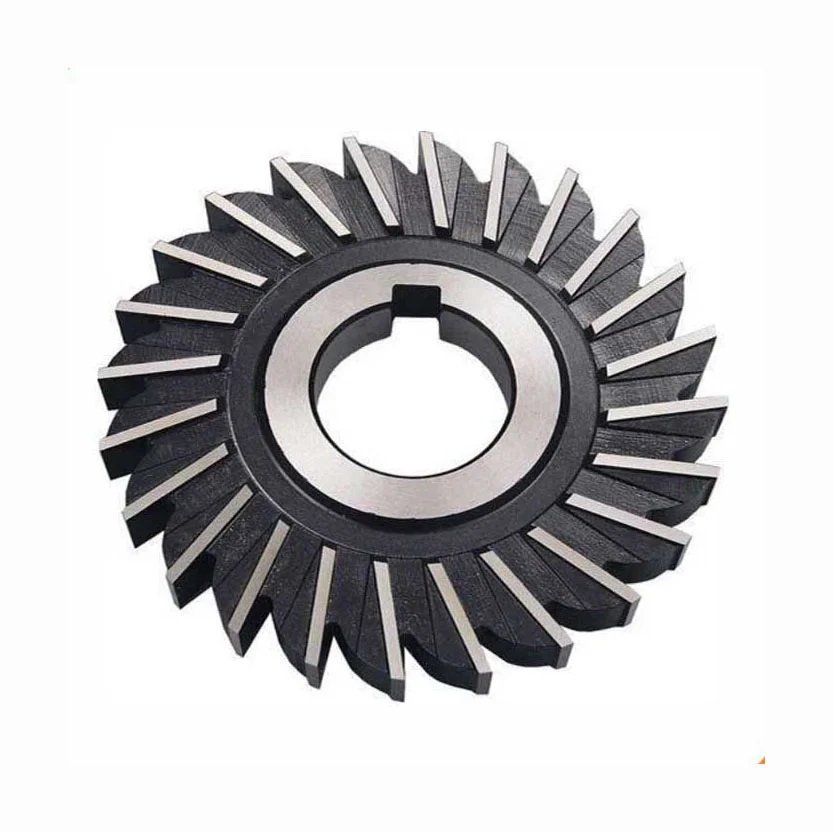Precision machining is an essential process in manufacturing industries, ensuring the creation of high-quality components with tight tolerances. One of the most critical tools in precision machining is the side milling cutter. These cutters play a crucial role in material removal, offering efficiency and accuracy in milling operations. In this article, we will explore the top side milling cutters, their features, benefits, and how they contribute to improving machining performance.
What Are Side Milling Cutters?
Side milling cutters are rotary cutting tools used in milling machines to remove material from workpieces. Unlike end mills, which cut from the tip, side milling cutters cut along their circumference, allowing for wider and deeper material removal. These cutters are widely used in industries such as aerospace, automotive, and tool manufacturing.
Types of Side Milling Cutters
1. Plain Side Milling Cutters
Plain side milling cutters have straight or helical teeth on the periphery and are used for cutting deep slots or finishing surfaces. They are commonly made from high-speed steel (HSS) or carbide, ensuring durability and long tool life.
2. Staggered Tooth Side Milling Cutters
These cutters feature alternating teeth with different orientations to reduce cutting forces and improve chip evacuation. They are handy for high-speed applications where smooth cutting is required.
3. Double-Angle Side Milling Cutters
Designed with angles on both sides, these cutters are perfect for chamfering, V-grooving, and angular cuts. They are widely used in precision machining applications where intricate designs are required.
4. Interlocked Side Milling Cutters
Interlocked cutters consist of two or more side milling cutters stacked together, providing excellent stability and efficiency. These are ideal for making wide slots or machining large surfaces in a single pass.
5. Inserted Side Milling Cutters
These cutters feature replaceable carbide inserts, making them a cost-effective option for high-production environments. They offer excellent heat resistance and maintain sharpness for longer machining cycles.
Features of High-Quality Side Milling Cutters
1. Material Composition
High-speed steel (HSS) and carbide are the two most common materials used in side milling cutters. HSS is suitable for general-purpose milling, while carbide offers superior hardness and heat resistance, making it ideal for high-speed applications.
2. Coatings for Enhanced Performance
Advanced coatings like Titanium Nitride (TiN), Titanium Aluminum Nitride (TiAlN), and Diamond-Like Carbon (DLC) coatings help reduce wear and extend tool life. These coatings also minimize friction, allowing for smoother cuts and improved chip removal.
3. Tooth Design
The geometry of the cutter’s teeth plays a significant role in performance. Helical teeth provide smoother cuts with reduced vibrations, while staggered teeth help in efficient chip evacuation. The choice of tooth design depends on the specific application and material being machined.
4. Cutter Diameter and Width
Selecting the right cutter diameter and width is crucial for achieving precision and efficiency. A larger diameter provides better stability, while a narrower width allows for fine detail work in intricate applications.
5. Compatibility with Milling Machines
Different milling machines require different arbor sizes and shank designs. Ensuring compatibility with your existing machinery is essential for optimal performance and reduced downtime.
Benefits of Using Side Milling Cutters
1. High Precision and Accuracy
Side milling cutters offer superior precision, making them ideal for industries requiring tight tolerances. They provide excellent surface finishes and consistent results, reducing the need for secondary finishing operations.
2. Efficient Material Removal
With their ability to cut along their circumference, side milling cutters remove material more efficiently than other cutting tools. This leads to faster machining times and increased productivity in manufacturing operations.
3. Versatility in Applications
From slot cutting to chamfering, side milling cutters can handle a variety of machining tasks. Their versatility makes them a valuable tool in different industrial applications.
4. Extended Tool Life
High-quality side milling cutters are designed to withstand harsh machining conditions. The use of durable materials and coatings ensures that these tools have a long operational life, reducing replacement costs.
5. Cost-Effective Machining
While precision tools can be expensive, the efficiency and longevity of side milling cutters lead to overall cost savings. Reduced machining time, lower tool replacement rates, and improved accuracy contribute to cost-effective manufacturing processes.
Best Practices for Using Side Milling Cutters
1. Selecting the Right Cutter for the Job
Choosing the appropriate cutter based on material type, cutting speed, and application ensures better performance and tool longevity.
2. Proper Feed and Speed Settings
Using the correct feed rate and spindle speed prevents tool wear and overheating. Consulting manufacturer guidelines can help in optimizing these settings.
3. Regular Tool Maintenance
Cleaning, sharpening, and inspecting side milling cutters regularly prolong their life and maintain cutting efficiency.
4. Using Coolants and Lubrication
Applying coolants reduces heat buildup and enhances chip removal, improving the overall efficiency of the cutting process.
5. Secure Clamping and Fixturing
Ensuring that the workpiece and cutter are securely clamped prevents vibrations and inaccuracies in machining operations.
Conclusion
Side milling cutters are essential tools in precision machining, offering unmatched accuracy, efficiency, and versatility. By choosing the right cutter type, material, and coatings, manufacturers can enhance their machining processes, reduce costs, and improve productivity. Whether you’re working with plain, staggered, or inserted side milling cutters, understanding their features and benefits will help you make the best selection for your specific application. Investing in high-quality side milling cutters ensures better results, extended tool life, and increased profitability in the long run.









